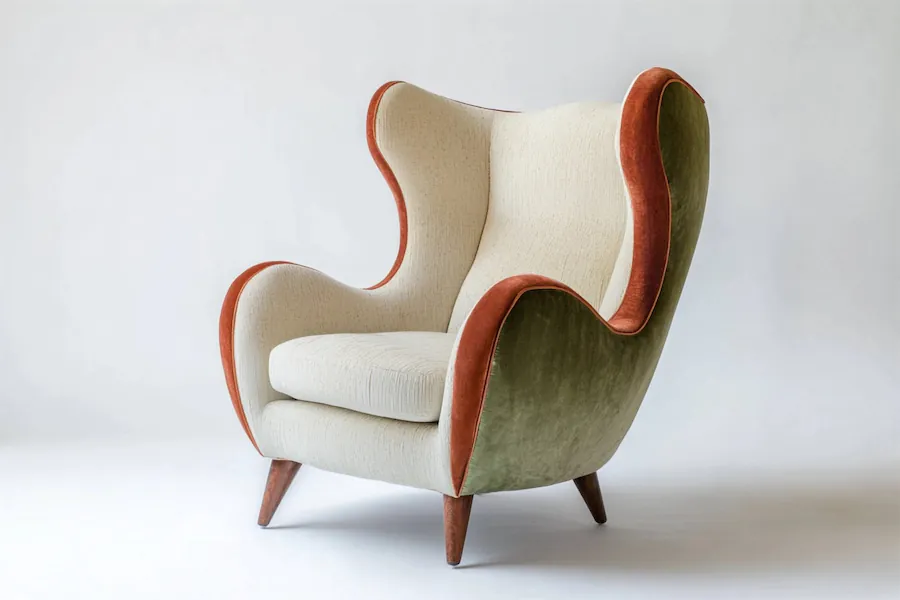A wingback chair, also known as a wing chair, is a classic piece of furniture distinguished by its high back and “wings” that extend from the backrest down to the armrests. These wings were originally designed to shield occupants from drafts and to trap the heat from a fireplace, providing a cozy seating experience.
History and Origins of the Wingback Chair
The wingback chair originated in England during the late 17th century, with its first appearances dating back to the 1600s. However, it wasn’t until the 1720s that the design gained widespread popularity. Initially, these chairs featured exposed wooden frames with minimal padding, serving both functional and aesthetic purposes in drafty homes. The design soon crossed the Atlantic to colonial America, where it became a staple in households, often found near fireplaces to provide warmth and comfort.
Key Features of the Wingback Chair
- Wings: The defining characteristic, these side panels extend from the backrest to the armrests, intended to protect the sitter from drafts and to retain heat from a nearby fireplace.
- High Backrest: Provides substantial support and adds to the chair’s imposing presence.
- Upholstery: Originally, wingback chairs had exposed wooden frames with padded cushions. Over time, they evolved to be fully upholstered, often in luxurious fabrics or leather.
- Legs: Early designs featured cabriole legs, while later versions incorporated various styles to match contemporary tastes.
Applications of the Wingback Chair
Traditionally placed near fireplaces, wingback chairs were designed to provide warmth and comfort. In modern interiors, they serve as versatile accent pieces, suitable for living rooms, studies, and bedrooms. Their classic design complements both traditional and contemporary décor, making them a popular choice for adding a touch of elegance and comfort to any space.
Considerations When Choosing a Wingback Chair
- Size: Ensure the chair’s dimensions fit the intended space without overwhelming the room.
- Upholstery Material: Select a fabric or leather that complements your interior décor and meets your comfort preferences.
- Design Style: Wingback chairs come in various styles, from traditional to modern; choose one that aligns with your aesthetic preferences.
- Comfort: Consider the chair’s cushioning and support, especially if it will be used for extended periods.
Conclusion
The wingback chair is a timeless piece of furniture that has evolved from its practical origins in the 17th century to become a symbol of elegance and comfort in modern interiors. Its distinctive design and versatility continue to make it a cherished addition to homes, seamlessly blending functionality with classic style.
